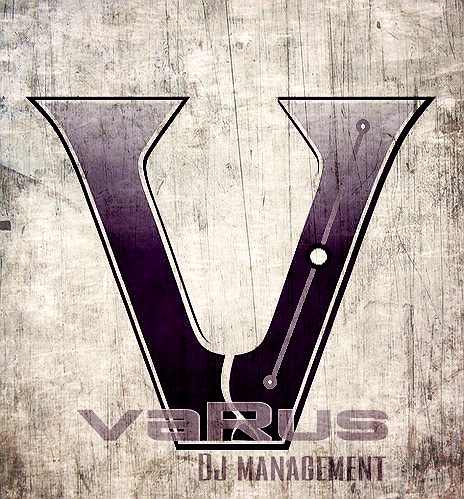Waking up after a long gig you find a tiny mosquito has taken up residence in your ear. You can try to get it out, but no amount of prying will shake free this annoyance. The unfortunate fact is, you never will because the high-pitched hum doesn’t actually exist. It’s a very cruel trick your damaged ear hairs are playing on your mind. For most people who experience this disturbing reality, it dissipates after a day, but an unlucky few are left with it for life. For a dramatic and comedic version of this all-too-common tale, check out the movie It’s All Gone Pete Tong.
(cheeky cockney slang for “it’s all gone wrong”). It’s what happens when a famous Ibiza club DJ gets tinnitus and eventually goes deaf from extreme noise levels. Hollywood exaggerations? Well, the average DJ booth is usually around 110 dB. According to industry standards, you should not be exposed to that level of noise for more than 30 minutes at a time before permanent damage can begin to take hold. Got your attention? Well, enough of the gloom and doom. Here is the good news: There is a simple way you can not only save your ears but also significantly clean up your mixes at the same time. All you need to do is let go of those clunky DJ headphones and try out in-ear monitoring.
In the past 20 years, the technology of personal ear monitors has progressed immensely. The quality of sound is now outstanding, and prices are much more accessible to your average performer. In-ears typically range from $100 to $500, and a quality pair of mid-level in-ears without custom molds comes in at around $250. There are many different manufacturers of earphone monitors — or “canal phones” — and two main categories of technology: armature and dynamic. The majority of in-ears are made with armature drivers (developed originally for hi-fidelity hearing aids). Armature drivers provide a detailed, flat picture of sound but tend to lack lower frequencies. To combat that, higher-end models frequently employ several armature drivers in a single ear bud. As many as three drivers connected by crossovers provide a complete sonic picture, which, with a proper seal, can reach down to 10 Hz in some models
Shure, Etymotic and Westone are all strong companies that use armature drivers in models that many different types of performers have. In my tests, dual-driver armatures sounded detailed and precise. They make poorly recorded MP3s painfully obvious and long plane rides seem shorter. The only drawback is the apparent lack of bass in some models. In a club environment, that’s not such a big deal because the subwoofers fill in the missing low end, but for personal listening, some models might be too bright for some people’s taste.
admit, this concept may require rethinking the way you DJ. Single-earphone cueing is impossible, and it’s impractical to continually put them in and take them out of your ears. But there are several workarounds, including mixers with split cueing and using the waveform displays in some digital-DJ programs to check the phase of a mix. They will all require some patience and a little relearning, but the payoff is worth the effort.
The possibility of almost completely eliminating the noise problem offers a glimmer of hope for many DJs, including myself. I highly encourage you to try out the technology on your own and see if personal ear monitors can help improve and extend the life of your DJ career.
In the past 20 years, the technology of personal ear monitors has progressed immensely. The quality of sound is now outstanding, and prices are much more accessible to your average performer. In-ears typically range from $100 to $500, and a quality pair of mid-level in-ears without custom molds comes in at around $250. There are many different manufacturers of earphone monitors — or “canal phones” — and two main categories of technology: armature and dynamic. The majority of in-ears are made with armature drivers (developed originally for hi-fidelity hearing aids). Armature drivers provide a detailed, flat picture of sound but tend to lack lower frequencies. To combat that, higher-end models frequently employ several armature drivers in a single ear bud. As many as three drivers connected by crossovers provide a complete sonic picture, which, with a proper seal, can reach down to 10 Hz in some models
Shure, Etymotic and Westone are all strong companies that use armature drivers in models that many different types of performers have. In my tests, dual-driver armatures sounded detailed and precise. They make poorly recorded MP3s painfully obvious and long plane rides seem shorter. The only drawback is the apparent lack of bass in some models. In a club environment, that’s not such a big deal because the subwoofers fill in the missing low end, but for personal listening, some models might be too bright for some people’s taste.
admit, this concept may require rethinking the way you DJ. Single-earphone cueing is impossible, and it’s impractical to continually put them in and take them out of your ears. But there are several workarounds, including mixers with split cueing and using the waveform displays in some digital-DJ programs to check the phase of a mix. They will all require some patience and a little relearning, but the payoff is worth the effort.
The possibility of almost completely eliminating the noise problem offers a glimmer of hope for many DJs, including myself. I highly encourage you to try out the technology on your own and see if personal ear monitors can help improve and extend the life of your DJ career.




